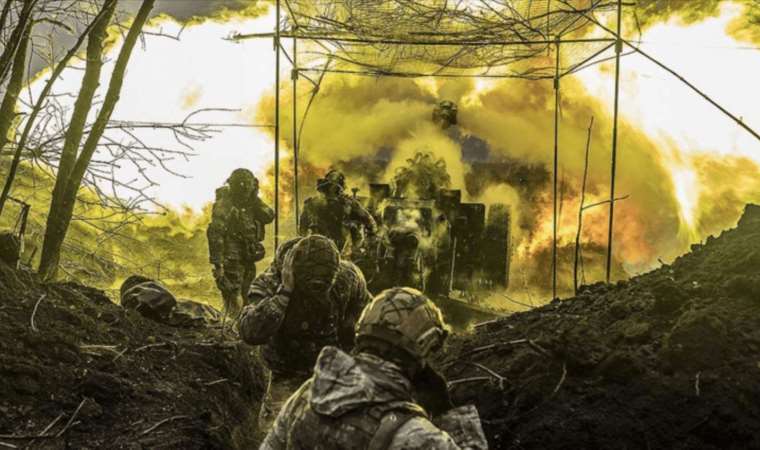The price of Russia's war in Ukraine: Bloodshed and Billions
Russia's invasion of Ukraine, which began on February 24, 2022, has had severe consequences over the past 18 months.

It has resulted in tens of thousands of casualties, the displacement of millions of people, and significant economic repercussions worldwide.
Some of the details of the impact:
DEATH
The conflict has caused an unprecedented level of death in Europe since World War Two. According to the United Nations High Commissioner for Human Rights (OHCHR), by the end of July, over 9,000 civilians had been reported killed, and more than 16,000 had been injured. These figures are believed to be significantly underreported. The war has also taken a toll on military personnel, with nearly 500,000 troops reported dead or injured, as per the New York Times. Estimates from the United States suggest that up to 120,000 Russian troops and 70,000 Ukrainian military personnel have been killed, with even higher numbers wounded. Russian officials dispute these figures, citing a significantly lower count of casualties, while Ukraine keeps its military losses confidential. Verification of casualty numbers remains challenging.
DISPLACEMENT
Since the invasion in 2022, millions of Ukrainians have been displaced from their homes, leading to a humanitarian crisis. According to the United Nations refugee agency, approximately 17.6 million people in Ukraine require urgent humanitarian assistance, including over 5 million internally displaced individuals. Additionally, more than 5.9 million Ukrainian refugees have been recorded in Europe.
UKRAINE
Russia has seized approximately 11% of Ukraine's territory since the start of the war, equivalent to the combined areas of Massachusetts, New Hampshire, and Connecticut. When considering Crimea, annexed by Russia in 2014, Russia now controls about 17.5% of Ukraine's total land area. Despite pushing back Russian forces in 2022, Ukraine has struggled to make significant gains against well-entrenched Russian troops since launching a new counteroffensive in early June. Ukraine has lost a significant portion of its coastline, and its economy has been severely affected, with some cities bearing the brunt of destruction. In 2022, Ukraine's economy contracted by 30%, and modest growth is anticipated this year.
RUSSIA
Russia's expenditure on the war is undisclosed, and its economy has been impacted by stringent Western sanctions imposed following the invasion. Although Russia's economy did not experience the expected double-digit contraction in 2022, a full recovery remains distant as the government directs increased spending toward the military. The International Monetary Fund predicts Russia's economy to grow by 1.5% in the current year, following a 2.1% contraction in 2022. However, it is expected that Russia's economic challenges will persist due to the departure of multinational companies, a loss of human capital, disconnection from global financial markets, and reduced policy buffers. Russia has increased its 2023 defense spending target to over $100 billion, representing a significant portion of public expenditure.
PRICES
The invasion and Western sanctions have led to substantial increases in the prices of various commodities, including fertilizer, wheat, metals, and energy. This has contributed to inflationary pressures and a global food crisis. Russia's status as a major oil and natural gas exporter, along with its dominance in wheat, nitrogen fertilizer, and palladium exports, has played a significant role in these price hikes.
WESTERN WEAPONS
Since the invasion, the United States has committed more than $43 billion in security assistance to Ukraine, including various military systems and equipment. Western nations, including the United States, the European Union, Britain, Germany, and Japan, have been major supporters of Ukraine in terms of providing assistance. Russia claims that the supply of Western weapons is escalating the conflict.

